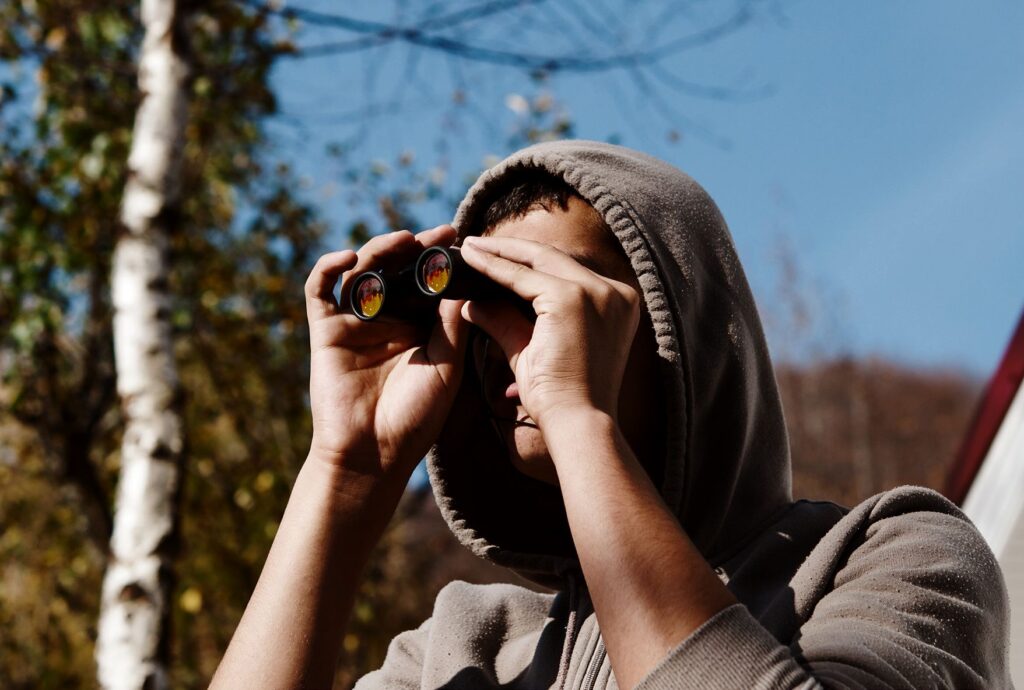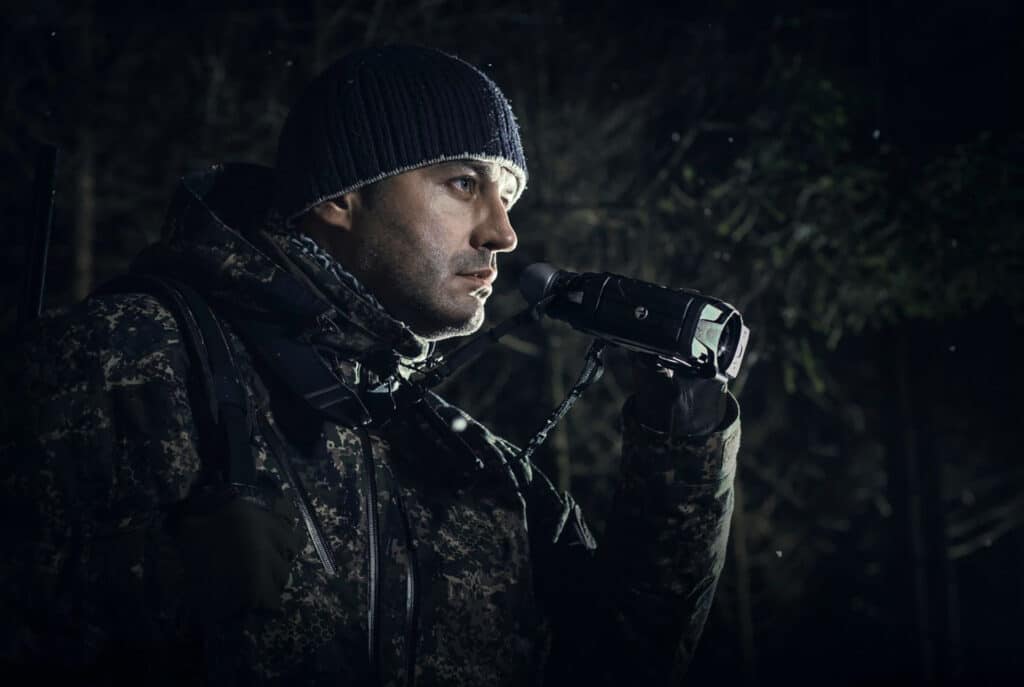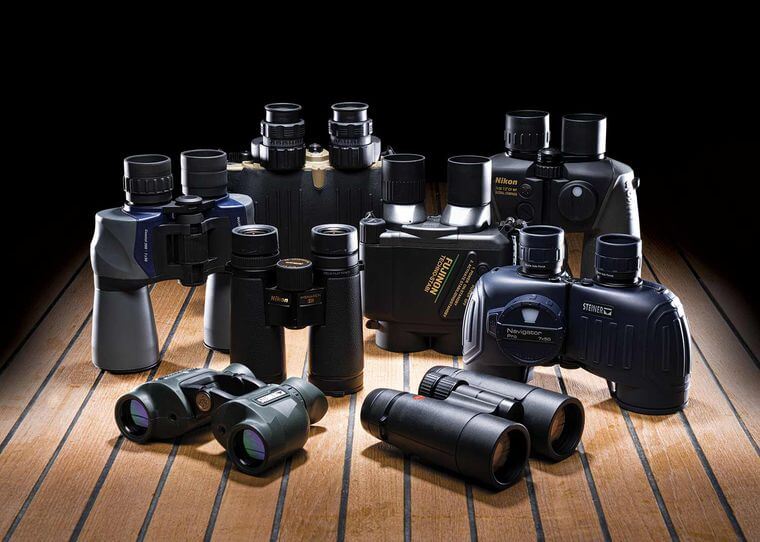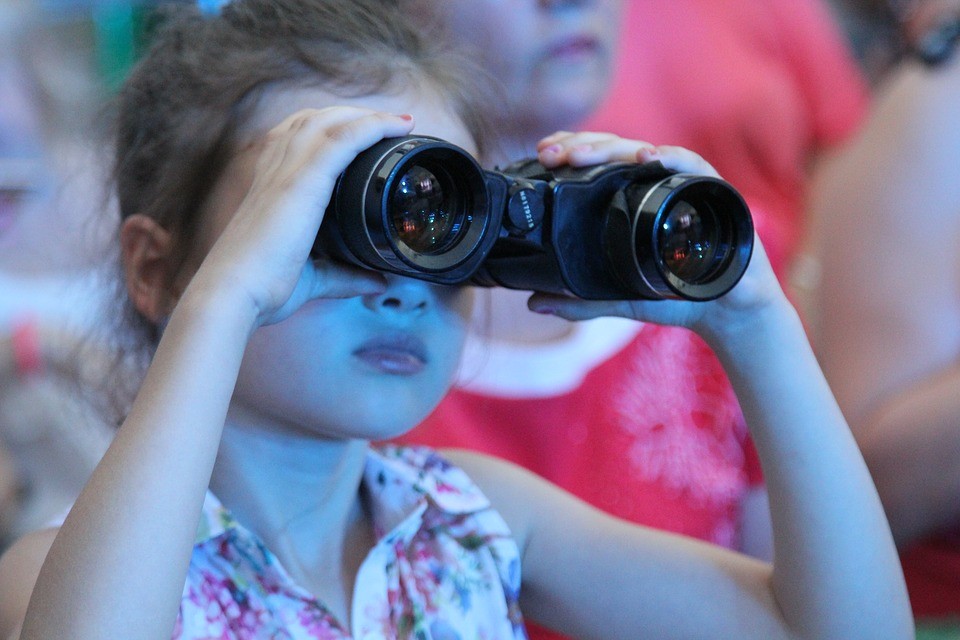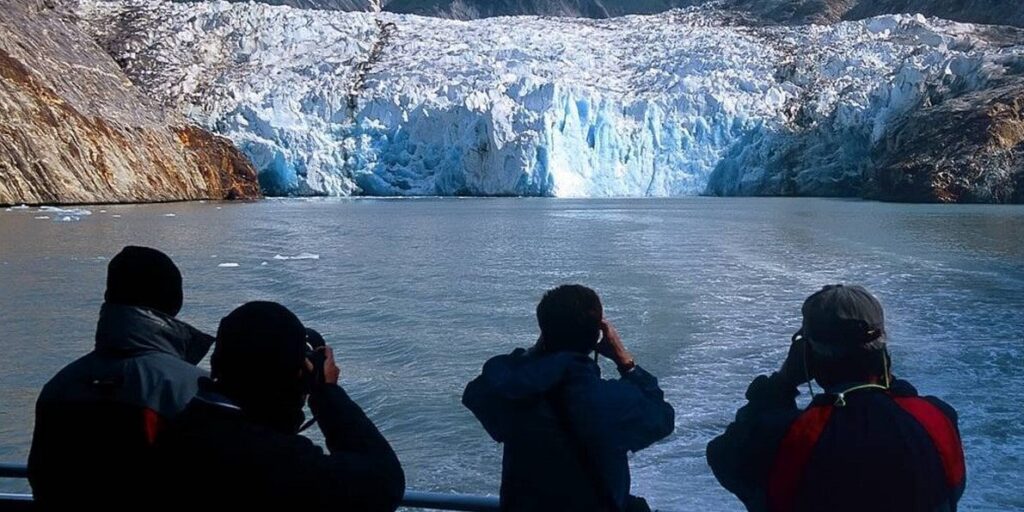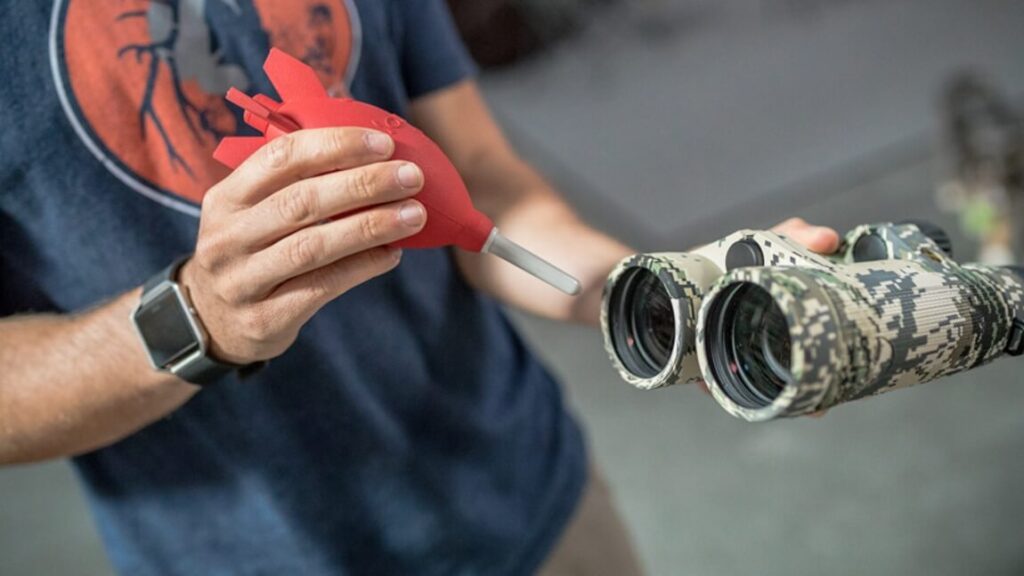

Assumptions on the quality of your options can be your undoing when trying to purchase the best binoculars for whale watching. What’s best is to take a pragmatic approach to the purchase by reviewing and comparing all potential purchases so that the best option ends up reasonably obvious. It might be taxing to do this alone, but with our help, your work is significantly reduced.
We have listed below some binocular options after reviewing and grading them. A section of features that helped inform our ratings for the products includes eye relief and the field of view. For these two, you get to know the ideal placement for your eyes so you can see through the binoculars and how far and wide you can see. You additionally check out the prism system to see the technology used to provide the image to your eye-piece. As for the quality of your images, both the prism system and the lens coating might affect what you see. Also, you want to ensure your whale watching experience is excellent by choosing binoculars of a suitable weight and length. It would even do you good for the best binoculars for whale watching you can find to have weather resistance and a few extra features.
Other features: hermetically sealed and float; multi-coated optics; UV-coated objective lenses; rubber armoring
The Bushnell Marine 7×50 Binoculars are almost perfect for anyone in the northern hemisphere. They will still perform relatively well in the south for viewing whales. However, since the compass is calibrated only for the northern part of the world, it will be unusable.
Also, this pair features a Porro prism, and as such, it will be bulkier than the roof prism options listed. However, the quality of the binoculars as a whole makes it possible to ignore this.
It is expected that you will spend a lot of time around seawater. Consequently, the binoculars being waterproof helps protect them from water damage. Also, should the binos fall into the water, they won’t sink since they are hermetically sealed. This allows you time to recover them.
Notably, the Porro prism binoculars use multi-coated optics to deliver the images to the eye-piece. As such, the image of that pod of whales you are keeping tabs on will be quite clear.
In addition to the incorporated compass and the imaging prowess of the binoculars, you get a rangefinder as well. These binos have also undergone hydrogen proofing to make them usable in foggy situations.
Finally, there is the rubber armor covering this tool. This makes the binoculars shock resistant and has the added advantage of providing users a firm grip.
What we liked: We liked that users get a firm grip and shock-absorbent body. Another protective measure is the UV coating on the objective lenses. Being fogproof situations is another pro, so you can get clear image whenever possible. Additionally, being able to float alongside having a compass and rangefinder may come in handy. Image quality is also bound to be worth the money thanks to the fully multi-coated optics. As a bonus, the binoculars come with a compass and rangefinder.
What could be better: If the compass were made usable in the southern hemisphere, it would make the binoculars available to a global market. The binoculars are also quilte bulky.
Other features: rubber-armored coating; magnesium chassis; UHD glass; waterproof and shockproof design
If the Porro prism options are not compact enough for your needs, the Athlon Optics Midas G2 8x42mm UHD Binoculars might be perfect. The field of view is the widest out of all the options listed here, and as such, viewing pods of whales will be a piece of cake.
UHD glass is a critical selling point for the binoculars since it eliminates chromatic fringing in the image. Consequently, the glass helps keep the image quality as high as it can be. The extra-low dispersion of the glass also helps achieve top-notch image quality.
A magnesium chassis is also something users like. It keeps the weight of the binos down while still providing lots of durability to users. This is further enhanced by the rubber covering.
Also, there is XPL coating on the objective lenses. With this, your binos get protection from scratches, oil, and dirt. Finally, argon purging helps keep the purchase waterproof.
What we liked: The use of multi-coated lenses helps a lot with the image quality. Additionally, there is extra XPL coating on the objective lens that protects against some damaging elements such as oil and dirt. A wide field of view is also an asset for whale viewing. Durability on these binoculars is also impressive. Lastly, these binos are compact and relatively lightweight.
What could be better: The binoculars could be cheaper.
Other features: rubber-armored coating; waterproof and fogproof
Another pair of 7×50 binoculars to be listed is the Nikon 7×50 Action Extreme Binoculars. Just like our editor’s pick, this purchase uses a Porro prism. As such, the dimensions are almost similar, and you can classify this purchase as bulky.
The eye relief in these binos is enough to cater for even people who wear glasses.
A rubber exterior has also been included, which allows the product to absorb shock without significant damage to the purchase. Under the rubber, you find a durable metal chassis as well.
Another similarity between these binos and the editor’s choice is the inclusion of multi-coated optics, which directly affect the images in the eye-piece for the better. Also, these binos are waterproof and fogproof, which ensures a cleare image whatever the weather conditions are.
If you also have vision imbalance between your eyes, which many people do, you can use the diopter to correct for that and allow effortless whale watching. When not using these binos, you can leave them hanging on your neck or store them in the provided case.
Finally, with a 25-year warranty, you needn’t worry about any defects that might appear with the purchase.
What we liked: Knowing how rocky the seas can be, having durable binoculars that can help users with tension-free whale viewing is crucial. A firm grip is assured by the presence of rubber armoring. The warranty also does well to ease user’s minds. The quality of the image is also good, and the purchase is also waterproof and fogproof. Finally, the binoculats cater to vision imbalance and spectacled individuals with its long eye relief.
What could be better: For a few users, the eyecups easily get damaged despite the rest of the binos being durable. Also, having no tether for the eyecups makes them easy to lose. The binos are bulky as well.
Other features: waterproof and fogproof; non-slip rubber armor; twist-up eyecups; lifetime limited warranty
Another pair of compact binoculars for whale watching from land is the Bushnell H2O 10x42mm Waterproof Binoculars. The manufacturer uses compact BaK-4 roof prism in making the tool to achieve high-quality imagery. The lenses in this prism are also multi-coated.
If you buy these binos, you get twist-up eyecups, and that can make using them comfortable for most people. For better handling, non-slip rubber armor is added to cover the body of the purchase.
The proximity to water while whale watching also presents specific hazards, e.g. water damage, which you have protection against if you purchase the Bushnell H2O 10x42mm Waterproof Binoculars. Also, since the binos are fogproof, clear viewing of whales is almost a guarantee.
These binoculars also use the lifetime warranty to put themselves ahead of the pack.
What we liked: The lifetime warranty is better than what is provided by most of the competition. These binoculars are also suited for proximity to water since they are waterproof and fogproof. You even get relatively secure handling with the non-slip rubber armor. The binos are also comfortable to use, since the manufacturer put some thought into the eye relief and eyecup design.
What could be better: The binos could be better if the manufacturer eliminated all chromatic aberrations. Lens covers also easily come off.
Other features: twist-up eyecups; waterproof and fogproof; rubber armored finish
The lowest magnification binoculars for whale watching and wildlife viewing on this list are the Sightron SII Blue Sky 8×32 Binoculars Rubber. These come in green. Like the Bushnell H2O 10x42mm Waterproof Binoculars, these use a BaK-4 roof prism in their design with multi-coated optical elements.
Another parallel with the Bushnell H2O option is the inclusion of twist-up eyecups. Like most of the list, rubber armor is there to protect the innards of the binoculars.
Also, you would expect binoculars of this caliber to be waterproof and fogproof, and the Sightron SII also delivers here.
What we liked: Being waterproof and fog proof works well for whale watchers due to the proximity to a water body. A rubber exterior protects the interior of the binos. The twist-up eyecups are a comfort to use. We also love the fantastic image quality.
What could be better: Most of the competition performs better in terms of magnification. Users have noted sub-par quality from accessories provided.
The best binoculars for whale watching from shore or on a boat allow you to marvel at the oceanic creatures from a safe distance. Unfortunately, the binos market is flooded with sub-par products, and the buying guide below may be your saving grace from making dire purchase mistakes.

You likely want high-quality binoculars for an enjoyable whale watching experience. To make this a reality, you need the right features in your purchase. You may be clueless about binocular features, which is understandable. However, you can read the section below to be better informed as you check out varying whale watching binocular options in the market.
If you are buying binoculars, you likely want to see further than your eyes can allow. This is why the magnification of the purchase is essential. The more the magnification, the further the binoculars for whale watching and wildlife viewing can help you see. As such, it is always better to go with higher magnification devices.
Also, you will get the size of the objective lens diameter indicated alongside the magnification information. With this information, you can determine the light-gathering capabilities of the binos. As for the Sightron SII Blue Sky 8×32 Binoculars, you get 8x magnification and an objective lens diameter of 32mm. The Nikon 7×50 Action allows 7x magnification and an objective lens diameter of 50mm.
Notably, the Nikon will have better light gathering capabilities due to a larger objective diameter. As you can see, you sometimes have to make a tradeoff between magnification and the objective lens diameter.
Watching whales from land often requires you to be outdoors where dust, dirt, and rain are a few things you can encounter. Weather-resistant binoculars will last longer in these conditions than options that have no weather protection at all. Remember that high levels of humidity are expected near the ocean as well.
Where no image stabilization technology is included, the image’s stability will depend on the magnification. Lower magnification devices are more stable, with 7x magnification being a common choice for many boaters and wildlife watchers. 8x magnification devices will not be as stable. However, if you want extra reach, you might have to make that sacrifice.
Having heavy binoculars can be exhausting since you often use your hands to hold them up to your eyes. If you buy bigger and heavier binoculars, it means you will have to take more breaks while whale watching. This can lead to you missing a few key moments.
Porro prism options like the Nikon 7×50 Action Extreme Binoculars are often larger than their roof prism competition. As such, if having compact binoculars is high on your priorities list, you would do well to go for roof prism binoculars instead.
Also, note that carrying these binos from home and back will be a regular occurrence. If you also carry other supplies while whale watching, you will wish you had lighter binoculars. You can avoid the headache by getting lightweight binos in the first place.
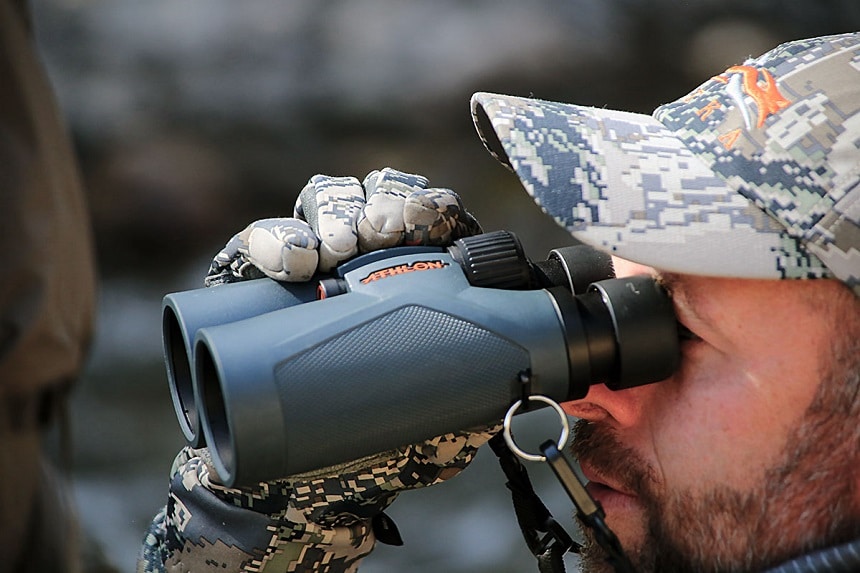
Notably, the size and weight are going to be affected by the prism system used. Porro prism systems like the one in the Bushnell Marine 7×50 Binoculars often take up more space, and as such, these binoculars are larger and heavier. Also, all optical components in this prism are usually reflective. For this reason, most of the light that comes through the objective lenses is retained.
Roof prisms allow for binoculars to be more compact and lighter. However, some surfaces incorporated in the prism are not entirely reflective. While this can lead to some light loss, the reflective part of certain surfaces is extra reflective to make up for the light loss. Also, there are measures in place in the design of roof prism surfaces to eliminate double images and image flare.
Various binoculars can be categorized according to the glass used as well. The main options are Bak4, BK7, and Sk15. Bak4 has been used in the making of the Bushnell H2O 10x42mm Waterproof Binoculars.
The result of having Bak4 glass is a high refractive index and minimal light loss. Most people who have tested different kinds of glass widely regard Bak4 as the best available option.
You may also encounter BK7 glass in the binoculars you check out. Worth noting is that light transmission in this type of glass is quite good. The refractive index also does not fall far off from that of the Bak4. Nevertheless, it doesn’t offer any exceptional qualities.
Notably, more BK7 prism options are available in the market than there are Bak4 binoculars. As for Sk15 binoculars, their best quality is a superior refractive index compared to the other two.
The various options you get for the optical components in your binoculars with regard to coating are coated, fully coated, and fully multi-coated. If one optical surface is coated in your prism system, the binos can be termed as coated.
Multi-coated options are just as they sound. More than one layer of the coating material can be applied to a single optical surface, and it would still qualify as multi-coated. For fully multi-coated options, all optical surfaces may have received several layers of coating.
Worth noting is that coating helps to eliminate light loss in the binoculars. As such, with more coating, you get brighter images.
Whale watching will also require as large a field of view as possible. Remember, these creatures are massive, and with a shallow field of view will hinder your efforts to watch them. The Athlon Optics Midas G2 8x42mm UHD Binoculars are impressive on our list since they allow users to get a 429 feet at 1000 yards field of view.
You also need to know how close your eyes need to be to the back lenses of the binoculars for the images to be clear. More extended eye relief has been known to be more comfortable for users, whether it is in binoculars or scopes.
The design of the eyecups will also significantly affect comfort. Options like the Sightron SII Blue Sky 8×32 Binoculars mentioned above use twist-up eyecups to make more comfortable products.
The Bushnell Marine 7×50 Binoculars have not only great image quality, but a few extra benefits: a compass, rangefinder, and UV protection for the objective lens. We feel this places the Bushnell Marine ahead of other options listed hence the high rating.
The second of our top three are the Athlon Optics Midas G2 8x42mm UHD Binoculars. Superior field of view, construction, and the protected lens make this a worthy purchase. It is, however, a shame that they are a bit pricey.
Next, you have the Nikon 7×50 Action Extreme Binoculars, which are stable, durable and have superior light gathering capabilities. Long eye relief is also a plus.
We wish you happy and efficient binos shopping and all the best as you go whale watching.
